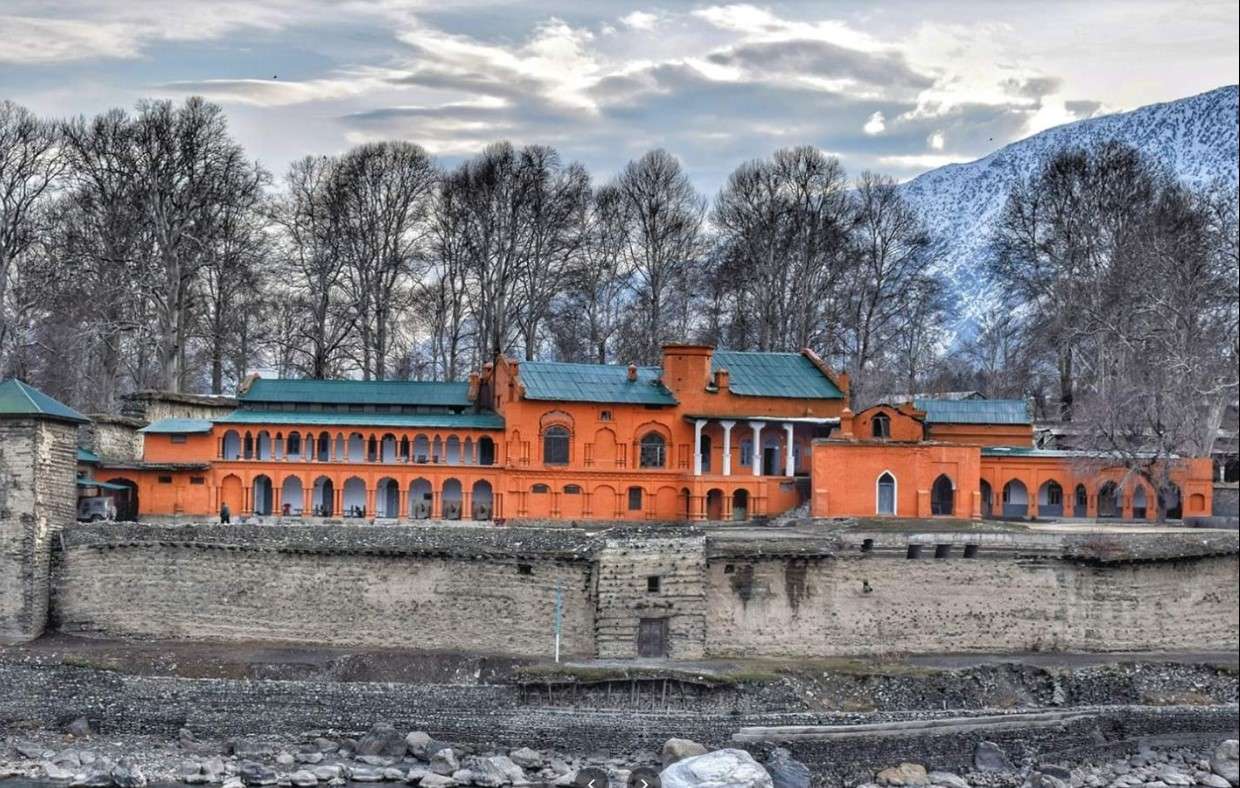Introduction:
Chitral Fort, also known as Kalikhan Fort, is one of the most significant historical landmarks in the Chitral District of Khyber Pakhtunkhwa, Pakistan. Located in the heart of Chitral town, the fort is a symbol of the region’s royal history, culture, and military architecture. The fort has played a key role in the region’s defense, serving as the residence of the local rulers for centuries and standing as a reminder of the historical influence of the princely state of Chitral.
Location:
- Location: Chitral Town, Chitral District, Khyber Pakhtunkhwa, Pakistan
- Coordinates: 35.8403° N, 71.7915° E
- Accessibility: The fort is located within the town of Chitral, making it easily accessible to visitors from the main market and other central locations. It is located on a hill, providing panoramic views of the surrounding valley, including the beautiful landscape of the Hindu Kush mountains.
Historical Significance:
Chitral Fort is closely tied to the history of the region, especially the Princely State of Chitral, which existed until the independence of Pakistan in 1947. The fort’s origin dates back to the 14th century, during the reign of the Mehtar of Chitral, although it has undergone several renovations and reconstructions over the centuries. It served as both a military stronghold and a royal residence, marking the power and prestige of the rulers of Chitral.
The fort’s primary role was as a defensive structure during conflicts with neighboring tribes and empires. It housed the ruling family and their troops, providing protection from external threats. Over time, it also became a symbol of the authority of the Mehtars, the hereditary rulers of Chitral.
Architectural Features:
- Structure and Design: The fort is a traditional Pashtun-style fort with high walls, sturdy watchtowers, and a strong defensive layout. The fort is primarily built from stone, giving it both strength and durability. The walls of the fort are thick and tall, designed to withstand attacks.
- Watchtowers: The fort includes several watchtowers that allow the defenders to keep an eye on the surrounding valley and surrounding area. These towers are positioned at strategic points on the fort to offer a clear line of sight and serve as lookout posts.
- Interior: Inside the fort, there are several rooms and corridors. The royal family would have had living quarters, administrative offices, and storage spaces within the fort’s walls. The interior was designed to provide both comfort and defense, with thick walls that could keep the occupants safe during times of siege.
- Courtyard: The central courtyard is an important feature of the fort. It would have served as a gathering area, with ceremonial spaces, gardens, and places for socializing.
Role in Chitral’s History:
Chitral Fort served as the home of the Mehtar (the ruler) of Chitral and his family.. It was the administrative center of the state, where key decisions regarding the region’s governance and military affairs were made.
- Defensive Role: The fort played a significant role during conflicts with neighboring tribes and foreign invaders, particularly during the British colonial era. Chitral Fort withstood several sieges and attacks, particularly during the Chitral Expedition of 1895, which was one of the key events in the history of British India.
- 1895 Chitral Expedition: The fort became internationally famous during the Chitral Expedition of 1895, a military conflict between the British Empire and the forces of the local ruler, the Mehtar of Chitral. The British troops, led by Colonel Algernon Durand, had to launch a military campaign to relieve the fort after it was under siege by forces loyal to the Mehtar’s rival. The British forces successfully relieved the fort, which helped to maintain British influence in the region and secure Chitral as a part of British India.
Chitral Fort During British Rule:
Under British rule, Chitral was an important strategic area. The British maintained a strong presence in the region and used the fort as a military outpost to monitor the movement of Russian forces and prevent potential invasions from Central Asia, especially during the Great Game—a period of geopolitical tension between the British Empire and the Russian Empire. The fort’s strategic location made it a key part of the British defense strategy in the region.
Post-Independence and Modern Times:
After the creation of Pakistan in 1947, Chitral became a part of Pakistan, and the fort continued to be a symbol of Chitral’s history. However, the fort’s significance gradually diminished as the princely state system was dissolved and Chitral became part of the larger Pakistani nation-state.
Today, the fort stands as a historical monument and a popular tourist attraction. It has become an important site for those interested in the history of Chitral, the region’s royal past, and its military heritage.
Visiting Chitral Fort:
Cultural Heritage: The fort is also a symbol of local pride for the people of Chitral. It has been a place of historical importance for centuries, and visiting it provides a deeper understanding of the cultural and historical identity of the region.
Tourism: Chitral Fort is open to the public and is a popular spot for tourists. Visitors can explore the fort’s architecture, learn about its historical significance, and enjoy the breathtaking views of Chitral town and the surrounding mountains. The fort is a great place to immerse oneself in the rich history of Chitral and the princely state.

 Uncategorized7 years ago
Uncategorized7 years ago
 Uncategorized7 years ago
Uncategorized7 years ago
 Uncategorized7 years ago
Uncategorized7 years ago
 Uncategorized7 years ago
Uncategorized7 years ago
 Uncategorized7 years ago
Uncategorized7 years ago
 Uncategorized7 years ago
Uncategorized7 years ago
 Uncategorized7 years ago
Uncategorized7 years ago
 Peshawar7 years ago
Peshawar7 years ago




